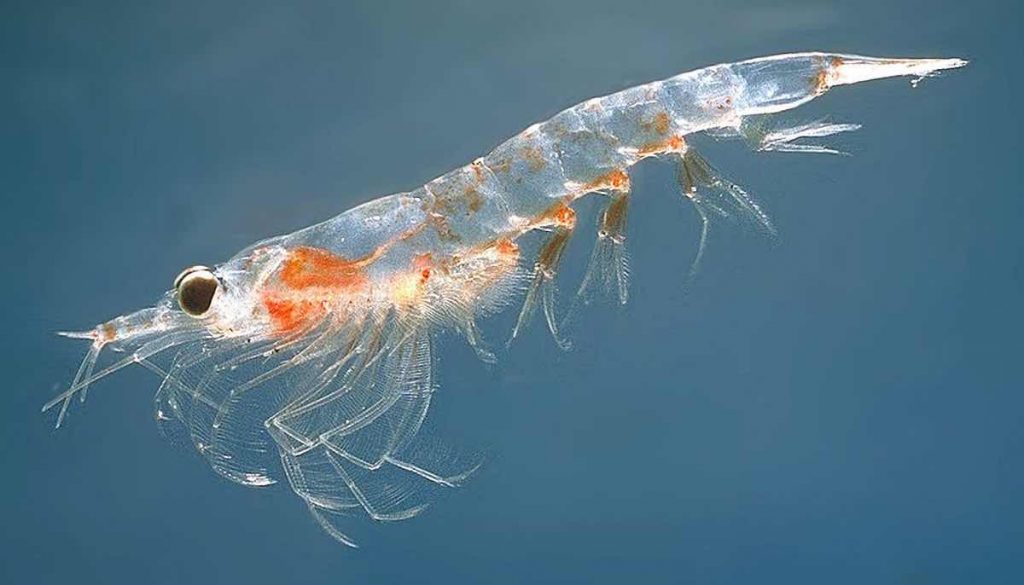Scientists Unite to Count Tiny Krill from Space to Inform Climate Change and Fishing Regulations

An international satellite monitoring collaboration is being formed to track the population of a keystone species in the waters around Antarctica.
Aimed at providing sophisticated and accurate data to help inform decisions about fishing in the Southern Ocean, it will use changes in the degree of red coloration detected by satellites to track its quarry: a tiny shrimp smaller than your pinky finger.
Krill anchor the marine food web by feeding dozens of major species, like humpback and blue whales, squids and other cephalopods, and penguins, and they school in such large numbers they can actually color the blue waters of the Earth red when seen from space.
During peak periods of population, you can find 10,000 krill per cubic meter of water.
The unique ‘Krill from Space’ project was launched at the 26th edition of the convention for the signatories of the Paris Climate Agreement, known as ‘COP’ in Baku, Azerbaijan. The World Wildlife Fund, the University of Strathclyde, and the British Antarctic Survey are all joining forces to help establish a space-based krill monitoring program.
“We start with seawater, then we add in a krill and take a measurement [of how much light the water absorbs]. Then we add another krill and take another measurement,” said Dr. Cait McCarry, from the University of Strathclyde who recently returned from an expedition to the Southern Ocean to gather these measurements.
“With sea ice declining and industrial fishing growing, we urgently need to better manage the fishery and protect krill habitats within a network of marine protected areas,” stated Rod Downie, chief polar advisor at WWF-UK. “‘Krill from Space’ may give us a new tool to help monitor and safeguard this vital species.”
Though krill are small, they are suspected to play a large role in maintaining the carbon cycle of the oceans by feeding on phytoplankton (which absorb CO2) and then depositing that CO2 in their droppings to the ocean floor.
GETTING GOOD RESULTS: Fin Whales Are Feeding In Huge Numbers in Antarctica for First Time in 45 Years – WATCH
This down-cycling system is estimated to sequester 300,000 metric tons of carbon into Davy Jones’ Locker, the equivalent of the entire daily emissions of the United Kingdom.
Oceanographic Magazine reports that whilst sea temperatures rise and Antarctic krill nurseries lose their protective sea ice, their populations are shrinking and shifting south.
MORE INITIATIVES LIKE THIS: Satellites Powerful Enough to Identify Individual Whales From Markings Can Track Migration and Help Save Species
“This is a ground-breaking effort to develop a new way to monitor krill swarms at the surface where they are known to occur in huge patches that are important feeding grounds for whales and other important marine species,” said David McKee, Reader in the Department of Physics at Strathclyde.
“We are delighted to be partnering with the WWF and BAS on this project. In time we hope to be able to support international conservation and sustainable management of this most important Antarctic species.”
SHARE This Monumental Effort At Studying The Southern Seas…
>read more at © GoodNews
Views: 0